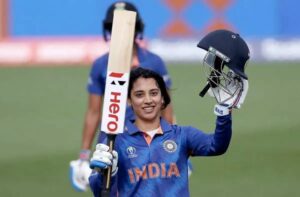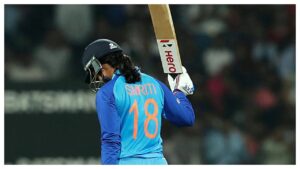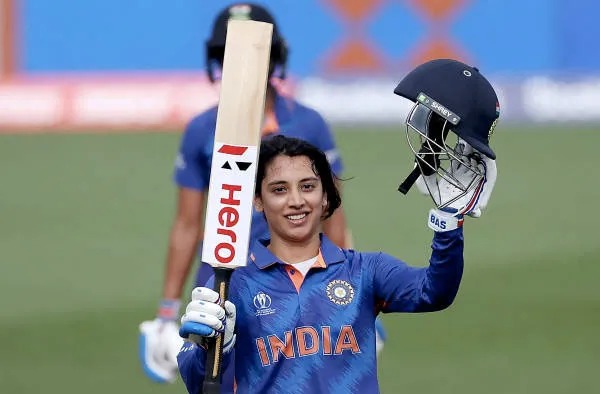
Adjusted for inflation, India’s star opener will take home more than half the match fee that Yuvraj Singh, six-hitting star of India’s World T20 win, got for playing in the first IPL. Women’s cricket is finally on the same ballpark as the men.
When the first Indian Premier League (IPL) auction was held in February 2008, it transformed the cricket landscape forever. A few weeks later, Graeme Smith’s South African team toured India for a three-Test series, which would finish in Kanpur just days before the IPL began. By the end of that match, South African journalists covering the tour were talking of how the very vocabulary around the team had changed. Player agents, till then fairly low-profile individuals in a sport where no one made that much money, were suddenly talking of yachts, cigars and champagne.
If anything, the first auction for the Women’s Premier League (WPL) has shattered the status quo even more. Their male counterparts, with a select few exceptions, were scarcely millionaires before the IPL began, but they also didn’t need to worry constantly about their futures. The days when even the leading male cricketers had to take up day jobs were long gone. Till even half a decade ago, the women earned nowhere near enough from central contracts or match fees to feel remotely secure about their futures.
The bids at the auction have truly been life-changing in that sense. And for the first time, the women can legitimately claim that they’re in the same ballpark as the men. Finally. It’s one thing for cricket boards, media organisations and even fans to talk glibly about equality and parity, but when it came to the bottom line, the disparity was huge.
Not anymore. Just consider these two numbers to get some perspective. In February 2008, Yuvraj Singh, who had smashed six sixes against England and then thumped a 34-ball 70 in the semifinal of the first T20 World Cup against Australia, was probably the most coveted player in the world. As icon player for Kings XI Punjab, Yuvraj was guaranteed 15 per cent more money than the team’s highest bid at the player auction. He ended up getting paid $1.064m for the season.
With the dollar worth 40 Rupees at the time, that worked out to around 4.25 crores. Adjusted to inflation, that salary would be worth around 11.5 crores now. So, the fact that Smriti Mandhana will take home 3.4 crores for the first season of WPL is a good indicator of just how rapidly women’s cricket has moved from the far pavilions to mid-pitch.
Remember too that we shouldn’t compare apples and oranges. Yuvraj was paid his money for a 14-game regular season. If you calculate on a per-match basis, he took home around 82 lakhs, in today’s money. Mandhana is being paid for an eight-game season, and will get approximately 42.5 lakhs per match.
That, by the way, is more than the late, great Shane Warne was paid for leading Rajasthan Royals to the inaugural IPL title. Warne’s contract then was worth $450,000. Adjusted to inflation, he would have taken home marginally less than 35 lakhs a game in today’s money. Warne was retired from international cricket by then, but as he was till his dying day, he remained box office.
By the time the IPL began, Yuvraj had been playing for India more than seven years. Thanks to the Under-19 World Cup win (2000), the Natwest Trophy triumph (2002) and his contributions in reaching a World Cup final (2003) and winning the World T20 (2007), he was a bonafide star, as marketable as anyone beyond the trinity of Sachin Tendulkar, Rahul Dravid and Sourav Ganguly.
Mandhana made her India debut in April 2013, while still a 16 year old. But it’s no exaggeration to say that until India stormed into the 2017 World Cup final by upsetting Australia, on the back of Harmanpreet Kaur’s incredible 171 not out, only the true cricket geeks would have recognised her. She was nowhere close to being a household name or a familiar face on our billboards.
All that will change now. What the auction has done is utterly alter the economics of women’s cricket, especially in India. The fact that franchises were willing to pay twice as much for Jemimah Rodrigues as they were for Australia’s Meg Lanning is a sign that they truly believe these players will bring fans flocking to grounds. Lanning is the finest batter the women’s game has produced in recent years, while Rodrigues has a long way to go before she can be mentioned in the same breath. But the 2.2 crores spent on her is also an investment in the future of women’s cricket, and affirmation that team owners aren’t scared that the tournament will be a damp squid that gets only lukewarm public support.

The two most important dates in the history of men’s cricket in India are June 25, 1983 and April 18, 2008 – the first World Cup win under Kapil Dev’s captaincy, followed nearly a quarter-century later by the first match of the IPL. Both changed the sport as we know it forever. Years from now, when the history of women’s cricket in India is updated, February 13, 2023 will have pride of place alongside July 20, 2017 – when Harmanpreet played her magnum opus – as the dates when hurricane gusts of change blew away cobwebs of self-doubt and conservatism.
This auction may have come too late for the likes of Mithali Raj, Jhulam Goswami, Lisa Sthalekar and Charlotte Edwards, but the huge bids made for those now walking the paths they carved out are the ultimate vindication of the sacrifices they made. We’re often told that money isn’t everything, and it’s not. But it matters. And at this auction, it mattered a great deal. When the dust had settled, it told us something that we’ve known for a while now. Women’s cricket is here to stay, and it’s no longer an afterthought.




